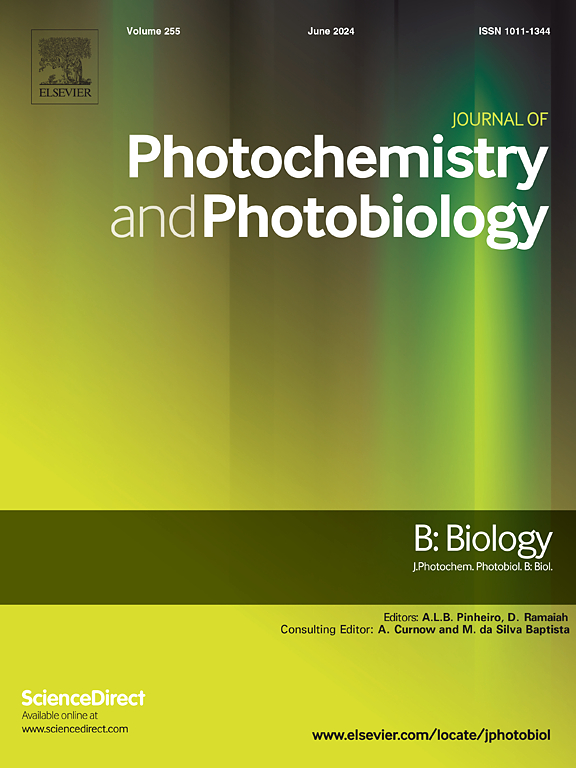α-arbutin prevents UVA-induced skin photodamage via alleviating DNA damage and collagen degradation in NIH-3T3 cells
IF 3.7
2区 生物学
Q2 BIOCHEMISTRY & MOLECULAR BIOLOGY
Journal of photochemistry and photobiology. B, Biology
Pub Date : 2025-02-01
DOI:10.1016/j.jphotobiol.2025.113100
引用次数: 0
Abstract
Ultraviolet radiation (UV) causes certain side effects to the skin, and their accumulation to a certain extent can lead to accelerated aging of the skin. Recent studies suggest that α-arbutin may be useful in various disorders such as hyperpigmentation disorders, wound healing, and antioxidant activity. However, the role of α-arbutin in skin photodamage is unclear. In this study, under UVA-induced photodamage conditions, α-arbutin treated mouse skin fibroblasts (NIH-3T3) can repair DNA damage and resist apoptosis by reducing the production of reactive oxygen species (ROS) and increasing the phosphorylation of glycogen synthase kinase 3 beta (GSK3β) to orchestra AKT/GSK3β pathway. Meanwhile, α-arbutin can also regulate collagen metabolism and facilitate the replenishment of collagen by targeting the phosphorylation of SMAD3 to mediate the TGFβ/SMAD pathway in NIH-3T3. In conclusion, we found that α-arbutin can mitigate the detrimental effects of skin photodamage induced by UVA irradiation, and provides a theoretical basis for the use of α-arbutin in the treatment of skin photodamage.

α-熊果苷通过减轻NIH-3T3细胞DNA损伤和胶原降解来预防uva诱导的皮肤光损伤。
紫外线(UV)对皮肤有一定的副作用,其积累到一定程度会导致皮肤加速老化。最近的研究表明,α-熊果苷可用于多种疾病,如色素沉着症、伤口愈合和抗氧化活性。然而,α-熊果苷在皮肤光损伤中的作用尚不清楚。在uva诱导的光损伤条件下,α-熊果苷处理的小鼠皮肤成纤维细胞(NIH-3T3)可以通过减少活性氧(ROS)的产生和增加糖原合成酶激酶3β (GSK3β)的磷酸化来调节AKT/GSK3β通路,从而修复DNA损伤并抵抗细胞凋亡。同时,α-熊果苷还可以在NIH-3T3中通过靶向SMAD3的磷酸化介导tgf - β/SMAD通路,调节胶原代谢,促进胶原的补充。综上所述,我们发现α-熊果苷可以减轻UVA照射引起的皮肤光损伤的有害影响,为α-熊果苷在皮肤光损伤治疗中的应用提供了理论依据。
本文章由计算机程序翻译,如有差异,请以英文原文为准。
求助全文
约1分钟内获得全文
求助全文
来源期刊
CiteScore
12.10
自引率
1.90%
发文量
161
审稿时长
37 days
期刊介绍:
The Journal of Photochemistry and Photobiology B: Biology provides a forum for the publication of papers relating to the various aspects of photobiology, as well as a means for communication in this multidisciplinary field.
The scope includes:
- Bioluminescence
- Chronobiology
- DNA repair
- Environmental photobiology
- Nanotechnology in photobiology
- Photocarcinogenesis
- Photochemistry of biomolecules
- Photodynamic therapy
- Photomedicine
- Photomorphogenesis
- Photomovement
- Photoreception
- Photosensitization
- Photosynthesis
- Phototechnology
- Spectroscopy of biological systems
- UV and visible radiation effects and vision.
文献相关原料
公司名称
产品信息
索莱宝
TBST

 求助内容:
求助内容: 应助结果提醒方式:
应助结果提醒方式:


